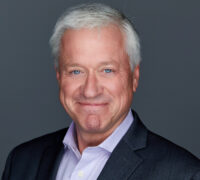
Three things I know: taking over the family business
How many times did I secretly wish for my father to leave the business and leave me the sole “Queen” on board? Ten years later, I cannot imagine working without him by...

by Michael D. Watkins Published February 10, 2022 in Brain Circuits • 2 min read
The puzzle you need to solve to design your organization’s strategy and structure contains many pieces. But, like any puzzle, if you leave out a key piece there will be a glaring hole. So it pays to take the time and run checks to make sure you have all the pieces in place – that’s where today’s question comes into play.
The quiz:
How do you define culture within your organization?
This seemingly innocuous question trips up a lot of people. Culture plays a critical role in how organizations perform. You need to be able to define what your culture is, if you wish to develop good approaches to analyzing, preserving, and transforming your company.
Why you need to check this regularly
Culture is not static. With the rise of new technologies disrupting sectors and businesses, companies must adapt their culture to become more flexible and curious. For many organizations, the disruptions of the pandemic have taken a hard toll on their culture. As employees go home to work and don’t return to the office, it changes the dynamic drastically. Have you taken account of how this has changed within your team and the broader organization as a whole?
A clear understanding of culture will help managers onboard new people and sustain those working in hybrid conditions. Finally, with rising workplace stress and a growing focus on how organizations protect their employees’ mental health, having a strong culture is vital to attract and retain staff.
Further reading:
10 attributes of culture that make it so difficult to change especially when workers aren’t in the office by Michael Watkins

Professor of Leadership and Organizational Change at IMD
Michael D Watkins is Professor of Leadership and Organizational Change at IMD, and author of The First 90 Days, Master Your Next Move, Predictable Surprises, and 12 other books on leadership and negotiation. His book, The Six Disciplines of Strategic Thinking, explores how executives can learn to think strategically and lead their organizations into the future. A Thinkers 50-ranked management influencer and recognized expert in his field, his work features in HBR Guides and HBR’s 10 Must Reads on leadership, teams, strategic initiatives, and new managers. Over the past 20 years, he has used his First 90 Days® methodology to help leaders make successful transitions, both in his teaching at IMD, INSEAD, and Harvard Business School, where he gained his PhD in decision sciences, as well as through his private consultancy practice Genesis Advisers. At IMD, he directs the First 90 Days open program for leaders taking on challenging new roles and co-directs the Transition to Business Leadership (TBL) executive program for future enterprise leaders, as well as the Program for Executive Development.

July 4, 2025 in Brain Circuits
How many times did I secretly wish for my father to leave the business and leave me the sole “Queen” on board? Ten years later, I cannot imagine working without him by...

July 3, 2025 • by Eric Quintane in Brain Circuits
Entrepreneurial talent who work with other teams often run into trouble with their managers. Here are ways to get the most out of your ‘boundary spanners’...
 Audio available
Audio available
July 3, 2025 • by Susanne May in Brain Circuits
Culture shapes how people work together, make decisions, handle conflict, and support each other. Ask yourself the following questions to check where your teams might be going wrong, and read on for tips on maximizing...

July 2, 2025 • by Susan Goldsworthy in Brain Circuits
When we feel stressed, we’re more likely to operate from a place of fear and fall back on a mindset that is fixed, judgmental, and focused on polarities – behaviour that soon...
Explore first person business intelligence from top minds curated for a global executive audience